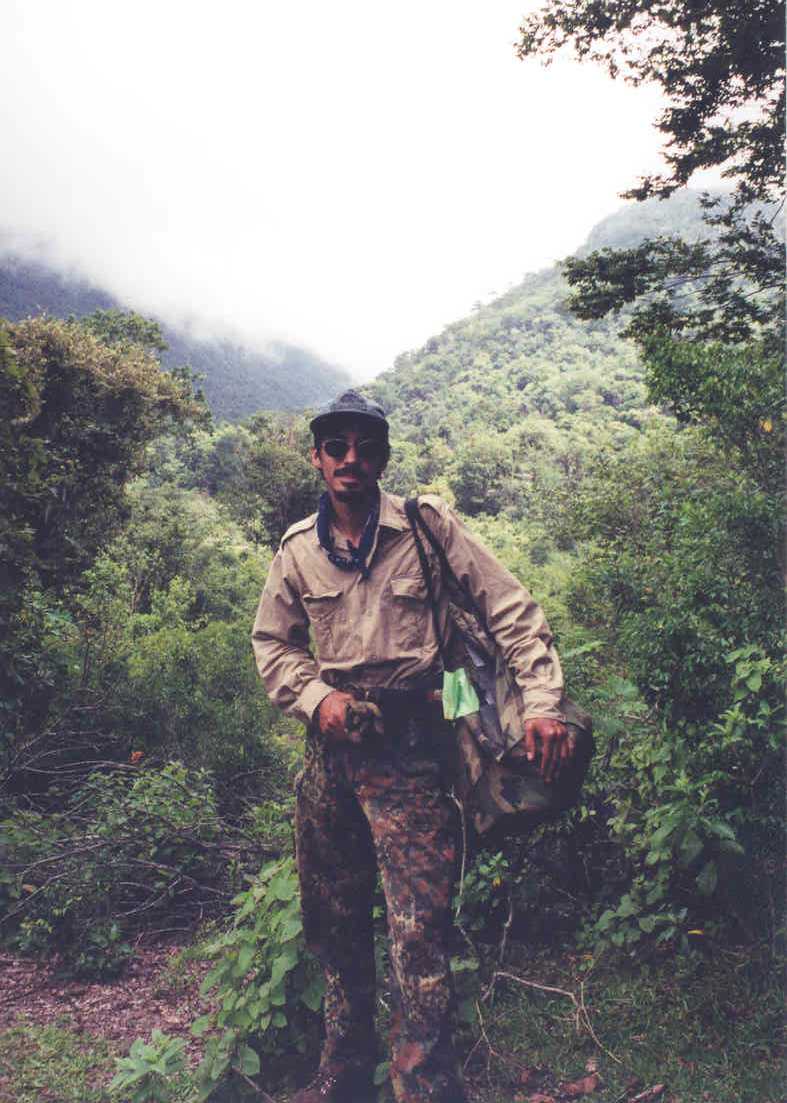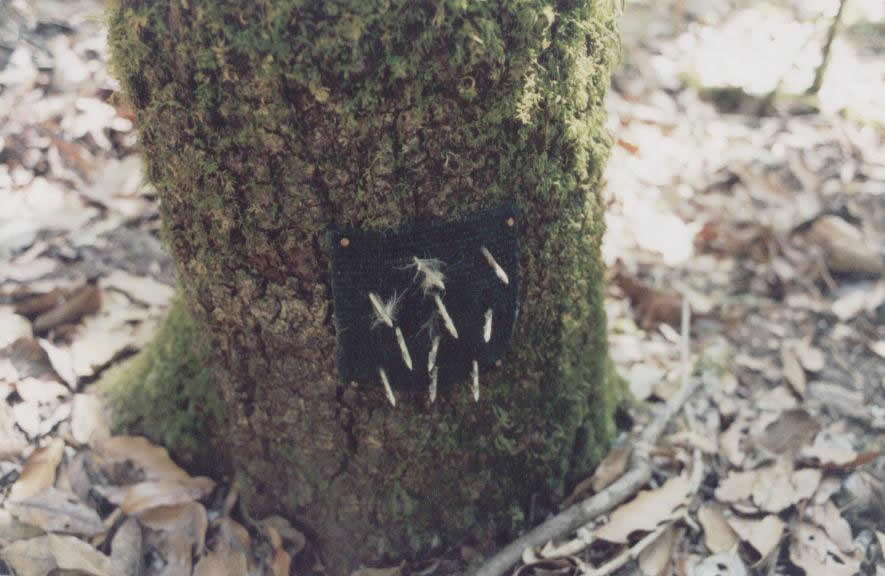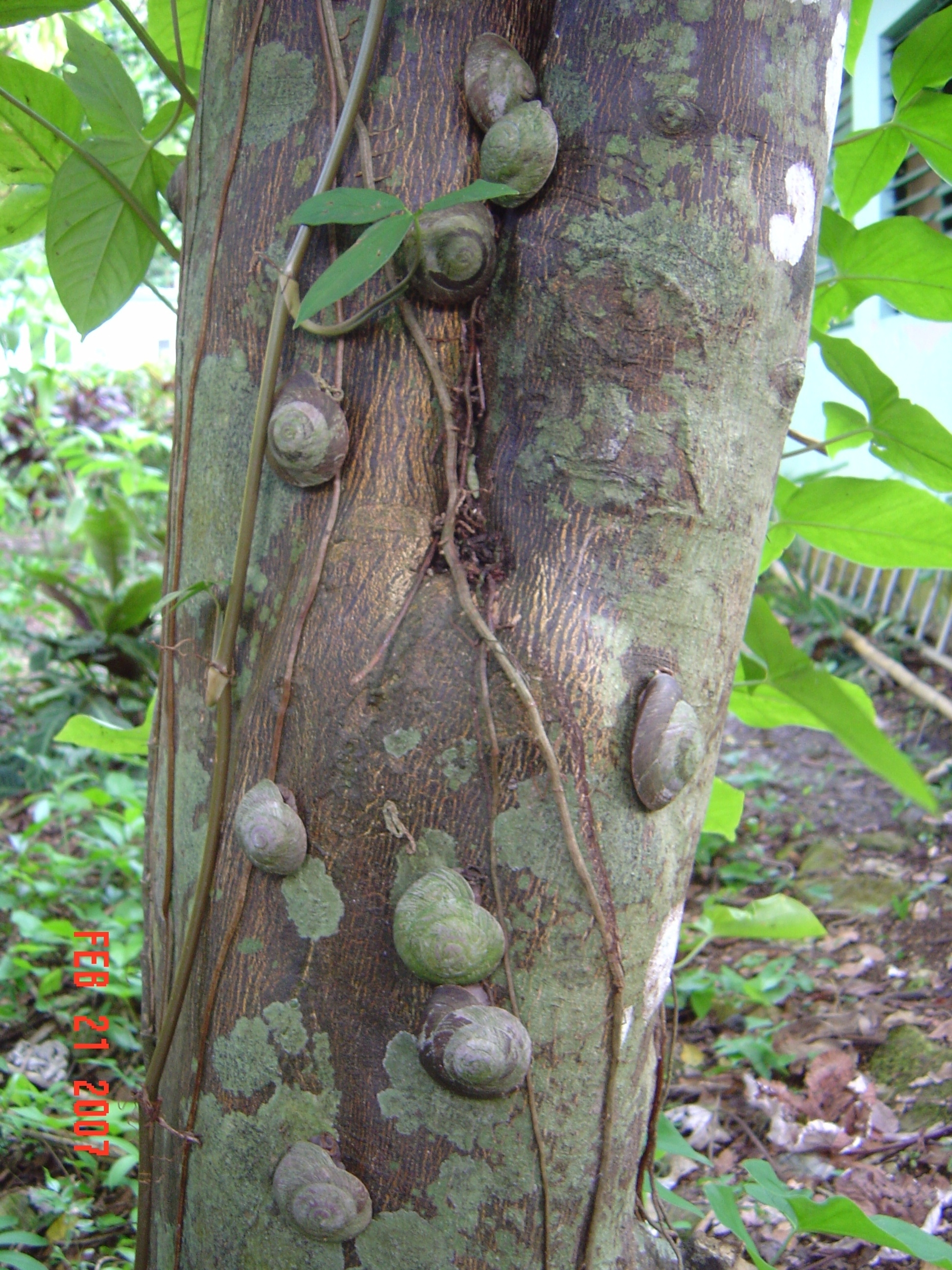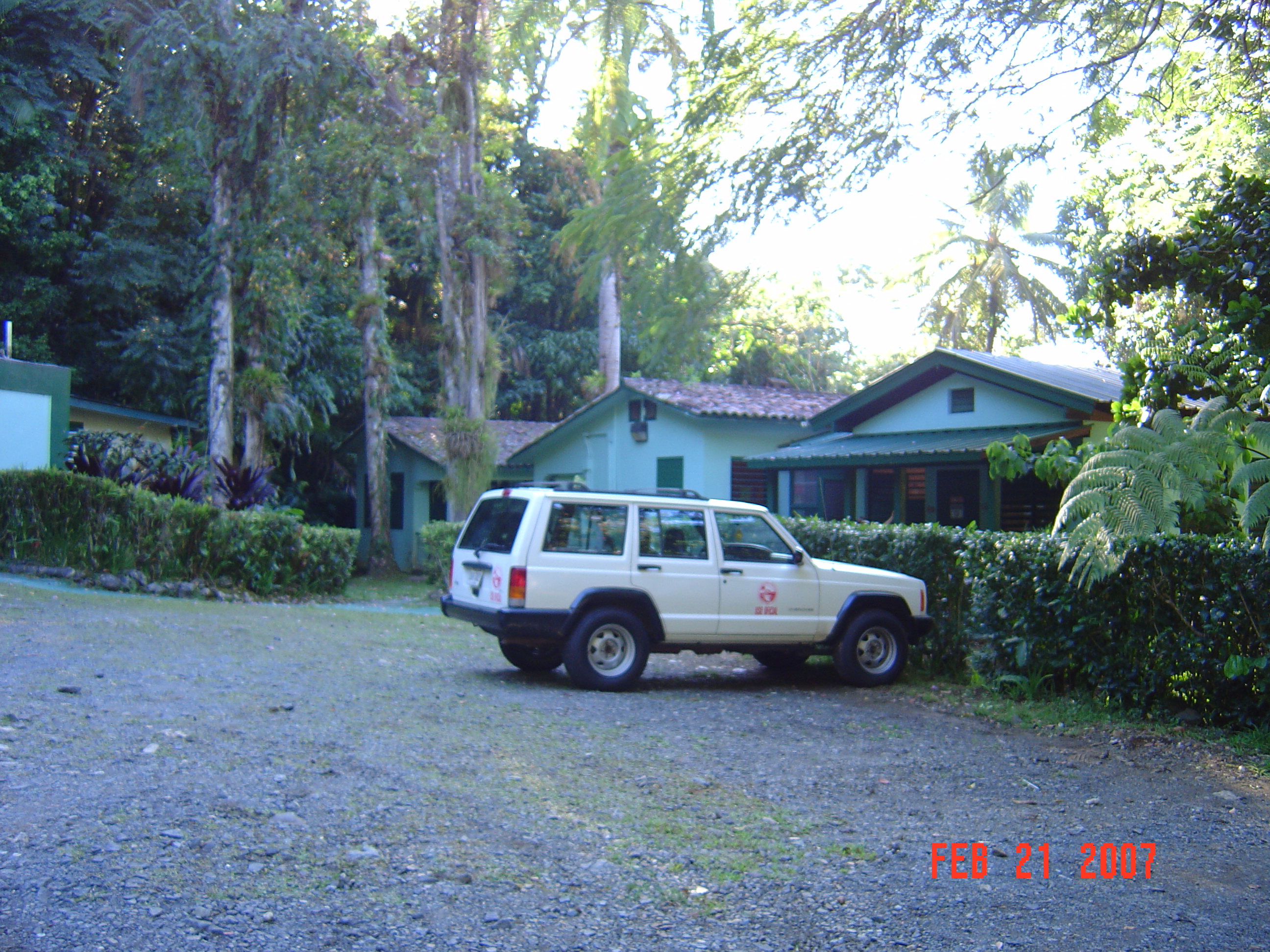Ivan Castro-ArellanoFormer Post Doctoral Associate Center for Environmental Sciences and Engineering email: ivan.castro@uconn.edu |
||||||
Research Interests
My core interest as an ecologist is how ecological processes interact across scales of time and space to determine the patterns of diversity distribution we observe in nature. Within this research agenda, my ultimate goal is to include phylogenetic information and spatially explicit frameworks to close gaps between ecology, evolution and biogeography. Community ecology is the main focus of my research but my interests are wide and also include: the development of cost-effective survey methods for Neotropical medium and large mammals, habitat use and modeling landscape approaches for mammals and the role of small mammal ecology patterns for the epidemiology of infectious diseases. Current and past research My formation and experience have been in mammal ecology and biogeography, for both academic and conservation objectives. As a student in 1993, I joined the research group of Dr. G. Ceballos at the Instituto de Ecologia of the National Autonomous University of Mexico (UNAM). My participation in diverse field projects and the interactions at this laboratory greatly influenced my ideas about how sound research is conducted and about current questions in our field. My research since then has focused on both the community ecology of small mammals and large-scale mammalian biogeographic patterns. For my undergraduate thesis project I quantified the latitudinal species gradient of terrestrial African mammals using polynomial regression analyses and during a summer internship at the Smithsonian National Museum of Natural History (Research Training Program) I studied the biogeography of elephant shrews (Macroscelidea), an order endemic to Africa. My doctoral research addressed assembly patterns of rodent communities present along a sharp altitudinal gradient at El Cielo Biosphere Reserve in northeast Mexico. Species at this reserve represent a unique mix of both Nearctic and Neotropical origins, allowing for unique comparisons between communities. I investigated temporal partitioning, microhabitat use, vertical habitat stratification and landscape co-occurrences using both multivariate statistics and null models based on Monte Carlo simulations. Patterns of species segregation and niche complementarity revealed these communities as highly structured assemblages. My study adds further proof to the role of heterogeneity in species segregation and also provides evidence of structural organization in subtropical rodent communities, such as the one present in well studied systems like desert rodent communities. A very important contribution from my doctoral research explores the role of temporal partitioning in community assembly. I provide the first demonstration of non-random structure in the nocturnal temporal niche partitioning for a diverse rodent community. Very few ecologists regard diel time as an important niche axis, but recent finds in several taxa are showing otherwise. I believe that small mammal ecologists have not given enough attention to this niche axis, an area that I want to develop further in my research agenda. Along with my doctoral study I have developed other projects and established collaborative efforts to address other objectives:
In my current participation as a postdoctoral fellow at the University of Connecticut, I am addressing the response of bat communities to Reduced Impact Logging practices at Tapajos National Forest in Brazil. Silvicultural demonstration plots of selective logging with RIL practices were established at this forest and bat communities where surveyed and compared to areas of undisturbed forest. Additionally, I am involved with the research at the Luquillo LTER site in Puerto Rico where the assemblages of terrestrial gastropods are being studied to understand the community response to disturbance over long temporal scales. At this site, I am leading surveys in plots over the altitudinal gradient at the Luqillo Experimental Forest to address the metacommunity structure of these abundant gastropod species that form an important part of the forest ecosystem dynamics.
Education Master of Science. 2000. Department of Wildlife and Fisheries Sciences, Texas A&M University. Major advisor, Dr. Thomas Lacher. Doctor of Philosophy. 2005. Department of Wildlife and Fisheries Sciences, Texas A&M University. Dissertation title: Ecological patterns of the small mammal communities at el Cielo Biosphere Reserve, Tamaulipas, Mexico. Major advisor, Dr. Thomas Lacher. PublicationsCastro-Arellano, I., H. Zarza and R. Medellín. 2000. Philander opossum. Mammalian species, 638:1-8. Ortega, J. and I. Castro-Arellano. 2001. Artibeus jamaicensis. Mammalian species: 662:1-9. Castro-Arellano, I. and T. Lacher, Jr. 2005. A new record and altitudinal extensions for El Cielo Biosphere Reserve mammals, Tamaulipas, México. Revista Mexicana de Mastozoología, 9:93-96. Castro-Arellano, I. 2006. Ecological patterns of the small mammal communities at el Cielo Biosphere Reserve, Tamaulipas, Mexico. Mastozoologia Neotropical, 13:153-154. Castro-Arellano, I., S. J. Presley, L. N. Saldaña, M. Willig and J. M. Wunderle. 2007. Effects of low-intensity logging on bat biodiversity in terra firme forest of lowland Amazonia. Biological Conservation, 138:269-285. Castro-Arellano, I., C. Madrid-Luna, T. E. Lacher, Jr., L. León-Paniagua. 2007. Hair-trap efficacy for detecting mammalian carnivores in the tropics. Journal of Wildlife Management 72:1405-1412. Castro-Arellano, I., G. Suzán, R. Flores León, R. Morales Jiménez, T. E. Lacher, Jr. 2009. Survey for antibody to hantaviruses in Tamaulipas, México. Journal of Wildlife Diseases 45:207-212. Presley, S. J., M. R. Willig, I. Castro-Arellano, and S. C. Weaver. 2009. Effects of habitat conversion on activity patterns of phyllostomid bats in lowland Amazonian rainforest. Journal of Mammalogy 90:210-221. Presley, S. J., M. R. Willig, L. N. Saldanha, J. M. Wunderle, and I. Castro-Arellano. 2009. Reduced-impact logging has little effect on temporal activity of frugivorous bats (Chiroptera) in lowland Amazonia.. Biotropica 41:369-378. Castro-Arellano, I., S. J. Presley, M. R. Willig, J. M. Wunderle, and L. N. Saldanha. 2009. Reduced-impact logging and temporal activity of understorey bats in lowland Amazonia. Biological Conservation 142:2131-2139. Castro-Arellano, I., and T. E Lacher, Jr. 2009. Temporal niche segregation in two rodent assemblages of subtropical Mexio. Journal of Tropical Ecology 25:593-603. Castro-Arellano, I., Lacher, T. E., Jr., Willig, M.R., Rangel, T. F. 2010. Assessment of assemblage-wide temporalniche segregation using null models. Methods in Ecology and Evolution 1:311-318. Presley, S. J., M. R. Willig, C. P. Bloch, I. Castro-Arellano, C. L. Higgins, and B. T. Klingbeil. 2011. A complex metacommunity structure for gastropods along an elevational gradient. Biotropica 43:480-488. Willig, M. R., S. J. Presley, C. P. Bloch, I. Castro-Arellano, L. M. Cisneros, C. L. Higgins, and B. T. Klingbeil. 2011. Tropical metacommunities and elevational gradients: disentangling effects of forest type from other elevational factors. Oikos 120:1497-1508. Arellano, E., I. Castro-Arellano, G. Suzan, F. González-Cozatl, and R. Morales-Jiménez. Seroprevalence of hantavirus in wild rodents from the Reserva de la Biosfera Sierra de Huautla, Morelos. Western North American Naturalist (accepted). Rodríguez-Ruíz, E. R., I. Castro-Arellano, and J. Valencia-Herverth. New records and appropriate northern range limit of pacas (Cuniculus paca) in Northeast Mexico. Southwestern Naturalist (accepted). Almazán, C., I. Castro-Arellano, and E. Camacho-Puga. First record of Ixodes scapularis in jaguars (Panthera onca) and implications for wild mammal conservation in northeast Mexico. Southwestern Naturalist (submitted). Rodriguez-Ruiz, E. R., I. Castro-Arellano, J. G. Jimenez, A. Moreno-Valdez, E. C. Puga, and F. J. Yeberino-gonzalez. First specimens of the collared anteater (Tamandua mexicana) for Tamaulipas. Southwestern Naturalist (submitted). Jenkings, D.G., C. Debevec, C. Benedict, C. Quang, D. Brown, E. Ouelette, L. Szeto, and I. Castro-Arellano. The paradox of the plankton and temporal overlap among populations of coexisting species. Global Ecology and Biogeography (submitted). Monographs published in the National Atlas of Mexican Mammals This great volume is available at the online bookstore from Mexico. Castro-Arellano, I. 2005. Cryptotis parva. Pp. 135-137. In: Los mamíferos silvestres de México (Ceballos, G. and G. Oliva, editors). Comisión Nacional para el Conocimiento y Uso de la Biodiversidad and Fondo de Cultura Económica. México. Castro-Arellano, I. 2005. Cryptotis parva. Pp. 135-137. In: Los mamíferos silvestres de México (Ceballos, G. and G. Oliva, editors). Comisión Nacional para el Conocimiento y Uso de la Biodiversidad and Fondo de Cultura Económica. México. Castro-Arellano, I. 2005. Sorex oreopolus. Pp. 148. In: Los mamíferos silvestres de México (Ceballos, G. and G. Oliva, editors). Comisión Nacional para el Conocimiento y Uso de la Biodiversidad and Fondo de Cultura Económica. México. Castro-Arellano, I. 2005. Sorex saussurei. Pp. 150-151. In: Los mamíferos silvestres de México (Ceballos, G. and G. Oliva, editors). Comisión Nacional para el Conocimiento y Uso de la Biodiversidad and Fondo de Cultura Económica. México. Castro-Arellano, I. 2005. Sorex sclateri. Pp. 151. In: Los mamíferos silvestres de México (Ceballos, G. and G. Oliva, editors). Comisión Nacional para el Conocimiento y Uso de la Biodiversidad and Fondo de Cultura Económica. México. Castro-Arellano, I. 2005. Sorex stizodon. Pp. 152. In: Los mamíferos silvestres de México (Ceballos, G. and G. Oliva, editors). Comisión Nacional para el Conocimiento y Uso de la Biodiversidad and Fondo de Cultura Económica. México. Castro-Arellano, I. 2005. Sorex veraepacis. Pp. 153-154. In: Los mamíferos silvestres de México (Ceballos, G. and G. Oliva, editors). Comisión Nacional para el Conocimiento y Uso de la Biodiversidad and Fondo de Cultura Económica. México. Castro-Arellano, I. 2005. Cratogeomys castanops. Pp. 585-586. In: Los mamíferos silvestres de México (Ceballos, G. and G. Oliva, editors). Comisión Nacional para el Conocimiento y Uso de la Biodiversidad and Fondo de Cultura Económica. México. Castro-Arellano, I. 2005. Chaetodipus pernix. Pp. 647-648. In: Los mamíferos silvestres de México (Ceballos, G. and G. Oliva, editors). Comisión Nacional para el Conocimiento y Uso de la Biodiversidad and Fondo de Cultura Económica. México. Castro-Arellano, I. 2005. Peromyscus hooperi. Pp. 740-741. In: Los mamíferos silvestres de México (Ceballos, G. and G. Oliva, editors). Comisión Nacional para el Conocimiento y Uso de la Biodiversidad and Fondo de Cultura Económica. México. Castro-Arellano, I. 2005. Peromyscus melanocarpus. Pp. 752-753. In: Los mamíferos silvestres de México (Ceballos, G. and G. Oliva, editors). Comisión Nacional para el Conocimiento y Uso de la Biodiversidad and Fondo de Cultura Económica. México. Castro-Arellano, I. 2005. Peromyscus melanurus. Pp. 757. In: Los mamíferos silvestres de México (Ceballos, G. and G. Oliva, editors). Comisión Nacional para el Conocimiento y Uso de la Biodiversidad and Fondo de Cultura Económica. México. Castro-Arellano, I. 2005. Peromyscus polius. Pp. 766. In: Los mamíferos silvestres de México (Ceballos, G. and G. Oliva, editors). Comisión Nacional para el Conocimiento y Uso de la Biodiversidad and Fondo de Cultura Económica. México. Castro-Arellano, I. and G. Ceballos. 2005. Cryptotis mexicana. Pp. 133. In: Los mamíferos silvestres de México (Ceballos, G. and G. Oliva, editors). Comisión Nacional para el Conocimiento y Uso de la Biodiversidad and Fondo de Cultura Económica. México. Castro-Arellano, I. and G. Ceballos. 2005. Sorex arizonae. Pp. 143. In: Los mamíferos silvestres de México (Ceballos, G. and G. Oliva, editors). Comisión Nacional para el Conocimiento y Uso de la Biodiversidad and Fondo de Cultura Económica. México. Castro-Arellano, I. and G. Ceballos. 2005. Sorex milleri. Pp. 146-147. In: Los mamíferos silvestres de México (Ceballos, G. and G. Oliva, editors). Comisión Nacional para el Conocimiento y Uso de la Biodiversidad and Fondo de Cultura Económica. México. Castro-Arellano, I. and G. Ceballos. 2005. Sorex ventralis. Pp. 152-153. In: Los mamíferos silvestres de México (Ceballos, G. and G. Oliva, editors). Comisión Nacional para el Conocimiento y Uso de la Biodiversidad and Fondo de Cultura Económica. México. Castro-Arellano, I. and G. Ceballos. 2005. Scalopus aquaticus. Pp. 155-156. In: Los mamíferos silvestres de México (Ceballos, G. and G. Oliva, editors). Comisión Nacional para el Conocimiento y Uso de la Biodiversidad and Fondo de Cultura Económica. México. Castro-Arellano, I. and G. Ceballos. 2005. Scapanus latimanus. Pp. 158-159. In: Los mamíferos silvestres de México (Ceballos, G. and G. Oliva, editors). Comisión Nacional para el Conocimiento y Uso de la Biodiversidad and Fondo de Cultura Económica. México. Castro-Arellano, I. and G. Ceballos. 2005. Spermophilus atricapillus. Pp. 562-563. In: Los mamíferos silvestres de México (Ceballos, G. and G. Oliva, editors). Comisión Nacional para el Conocimiento y Uso de la Biodiversidad and Fondo de Cultura Económica. México. Castro-Arellano, I. and G. Ceballos. 2005. Cratogeomys gymnurus. Pp. 569-590. In: Los mamíferos silvestres de México (Ceballos, G. and G. Oliva, editors). Comisión Nacional para el Conocimiento y Uso de la Biodiversidad and Fondo de Cultura Económica. México. Castro-Arellano, I. and G. Ceballos. 2005. Chaetodipus fallax. Pp. 639-640. In: Los mamíferos silvestres de México (Ceballos, G. and G. Oliva, editors). Comisión Nacional para el Conocimiento y Uso de la Biodiversidad and Fondo de Cultura Económica. México. Castro-Arellano, I. and G. Ceballos. 2005. Chaetodipus intermedius. Pp. 643-644. In: Los mamíferos silvestres de México (Ceballos, G. and G. Oliva, editors). Comisión Nacional para el Conocimiento y Uso de la Biodiversidad and Fondo de Cultura Económica. México. Castro-Arellano, I. and E. Marce. 2005. Peropteryx kappleri. Pp. 167. In: Los mamíferos silvestres de México (Ceballos, G. and G. Oliva, editors). Comisión Nacional para el Conocimiento y Uso de la Biodiversidad and Fondo de Cultura Económica. México. Castro-Arellano, I. and R. Medellín. 2005 Philander opossum. Pp. 111-113. In: Los mamíferos silvestres de México (Ceballos, G. and G. Oliva, editors). Comisión Nacional para el Conocimiento y Uso de la Biodiversidad and Fondo de Cultura Económica. México. Castro-Arellano, I. and L. Morales. 2005. Thomomys bottae. Pp. 606-607. In: Los mamíferos silvestres de México (Ceballos, G. and G. Oliva, editors). Comisión Nacional para el Conocimiento y Uso de la Biodiversidad and Fondo de Cultura Económica. México. Castro-Arellano, I. and M. Santos. 2005. Oligoryzomys fulvescens. Pp. 703-704. In: Los mamíferos silvestres de México (Ceballos, G. and G. Oliva, editors). Comisión Nacional para el Conocimiento y Uso de la Biodiversidad and Fondo de Cultura Económica. México. Castro-Arellano, I. and J. Uribe. 2005. Noctilio albiventris. Pp. 173-174. In: Los mamíferos silvestres de México (Ceballos, G. and G. Oliva, editors). Comisión Nacional para el Conocimiento y Uso de la Biodiversidad and Fondo de Cultura Económica. México. Castro-Arellano, I. and J. Uribe. 2005. Oryzomys nelsoni. Pp. 712-713. In: Los mamíferos silvestres de México (Ceballos, G. and G. Oliva, editors). Comisión Nacional para el Conocimiento y Uso de la Biodiversidad and Fondo de Cultura Económica. México. Castro-Arellano, I. and J. Uribe. 2005. Chaetodipus penicillatus. Pp. 646-647. In: Los mamíferos silvestres de México (Ceballos, G. and G. Oliva, editors). Comisión Nacional para el Conocimiento y Uso de la Biodiversidad and Fondo de Cultura Económica. México. Ceballos, G. and I. Castro-Arellano. 2005. Peromyscus perfulvus. Pp. 764-765. In: Los mamíferos silvestres de México (Ceballos, G. and G. Oliva, editors). Comisión Nacional para el Conocimiento y Uso de la Biodiversidad and Fondo de Cultura Económica. México. Marce, E. and I. Castro-Arellano. 2005. Peropteryx macrotis. Pp. 167-169. In: Los mamíferos silvestres de México (Ceballos, G. and G. Oliva, editors). Comisión Nacional para el Conocimiento y Uso de la Biodiversidad and Fondo de Cultura Económica. México. Marce, E. and I. Castro-Arellano. 2005. Peromyscus spicilegus. Pp. 771-772. In: Los mamíferos silvestres de México (Ceballos, G. and G. Oliva, editors). Comisión Nacional para el Conocimiento y Uso de la Biodiversidad and Fondo de Cultura Económica. México. Morales, L. and I. Castro-Arellano. 2005. Thomomys umbrinus. Pp. 608-609. In: Los mamíferos silvestres de México (Ceballos, G. and G. Oliva, editors). Comisión Nacional para el Conocimiento y Uso de la Biodiversidad and Fondo de Cultura Económica. México. Morales, L. and I. Castro-Arellano. 2005. Chaetodipus golmani. Pp. 641-642. In: Los mamíferos silvestres de México (Ceballos, G. and G. Oliva, editors). Comisión Nacional para el Conocimiento y Uso de la Biodiversidad and Fondo de Cultura Económica. México. Santos, M. and I. Castro-Arellano. 2005. Molossus aztecus. Pp. 322. In: Los mamíferos silvestres de México (Ceballos, G. and G. Oliva, editors). Comisión Nacional para el Conocimiento y Uso de la Biodiversidad and Fondo de Cultura Económica. México. Santos, M. and I. Castro-Arellano. 2005. Molossus molossus. Pp. 324. In: Los mamíferos silvestres de México (Ceballos, G. and G. Oliva, editors). Comisión Nacional para el Conocimiento y Uso de la Biodiversidad and Fondo de Cultura Económica. México. Santos, M. and I. Castro-Arellano. 2005. Molossus rufus. Pp. 325 In: Los mamíferos silvestres de México (Ceballos, G. and G. Oliva, editors). Comisión Nacional para el Conocimiento y Uso de la Biodiversidad and Fondo de Cultura Económica. México Santos, M. and I. Castro-Arellano. 2005. Heteromys desmarestianus. Pp. 624-625. In: Los mamíferos silvestres de México (Ceballos, G. and G. Oliva, editors). Comisión Nacional para el Conocimiento y Uso de la Biodiversidad and Fondo de Cultura Económica. México. Uribe, J. and I. Castro-Arellano. 2005. Noctilio leporinus. Pp. 174-177. In: Los mamíferos silvestres de México (Ceballos, G. and G. Oliva, editors). Comisión Nacional para el Conocimiento y Uso de la Biodiversidad and Fondo de Cultura Económica. México.
PresentationsPoster Presentations Castro-Arellano, I. and T. E. Lacher, Jr. 2005. Relevance of temporal niche dynamics for two contrasting rodent communities in subtropical Mexico. Annual meeting of the American Society of Mammalogists, Springfield, MO. Castro-Arellano, I. and T. E. Lacher, Jr. 2004. Relevance of temporal niche dynamics for rodent community patterns at El Cielo Biosphere Reserve, Mexico. Annual meeting of the Association of Tropical Biology and Conservation in Miami, FL. Castro-Arellano, I. and G. Ceballos. 1999. Patrones de distribucion geografica en los mamiferos terrestres de Africa”. 5th National Mammalogist Congress, Mexican Mammalogist Association, Merida, Yucatan, Mexico. Castro-Arellano, I. and G. Ceballos. 1999. Patterns of distribution in the terrestrial mammals of Africa. 79th Meeting of the American Society of Mammalogists, Seattle, WA, USA. Castro-Arellano, I. and G. Ceballos. 1997. Patterns of diversity, endemism and extinction risk in the terrestrial African mammals”. Mexican Zoological Society meeting in Guanajuato, Mexico. Castro-Arellano, I. 1997. The Research Training Program at the Smithsonian Institution. Oral presentation and workshop organizer at the Mexican Zoological Society meeting in Guanajuato, Mexico. Castro-Arellano, I. 1995. Biogeography of the elephant shrews, Mammalia: Macroscelididae". Final Presentations of the Participants of the 1995 Research Training Program, National Museum of Natural History, Smithsonian Institution.
Oral Presentations Castro-Arellano, I., C. Madrid, L. Leon-Paniagua, and T. E. Lacher., Jr. 2006. Efficiency of two hair trap designs to detect medium and large mammals. Annual meeting of the American Society of Mammalogists, Amherst, MA. Castro-Arellano, I. and T. E. Lacher, Jr . 2005. Terrestrial and scansorial microhabitat use at two contrasting small mammal communities in subtropical Mexico. Annual meeting of the American Society of Mammalogists, Springfield, MO. Madrid, C., Castro-Arellano, I., L. Leon-Paniagua, and T. E. Lacher., Jr. 2004. Efficiency of two hair trap designs to detect medium and large mammals. 7th National Mammalogist Congress, Mexican Mammalogist Association, Chiapas, Mexico. Second place award in poster competition. Castro-Arellano, I. and G. Ceballos. 2002. Mammalian species density gradients in Africa. 2002 Annual Symposium of the British Ecological Society. Symposium title: Macroecology, reconciling divergent perspectives on large scale ecological patterns. Castro-Arellano, I. and G. Ceballos. 2000. Diversity, endemism and endangerment patterns of the continental African mammals. Society for Conservation Biology annual meeting, Missoula, Montana. Castro-Arellano, I. and G. Ceballos. 1997. Geographic distribution patterns of the terrestrial African mammals. International Theriological Congress in Acapulco, Mexico. Research Grants09/2004 05/2002 04/2002 05/2001 11/2000 07/2000
Professional Organizations06/2005 to present 08/2000-05/2003 10/1999-10/2003 2002 1999 |
Unless otherwise indicated, figures, tables, and images that appear on this page may not be used, reproduced, copied, or posted elsewhere, for any reasons, without permission. |




